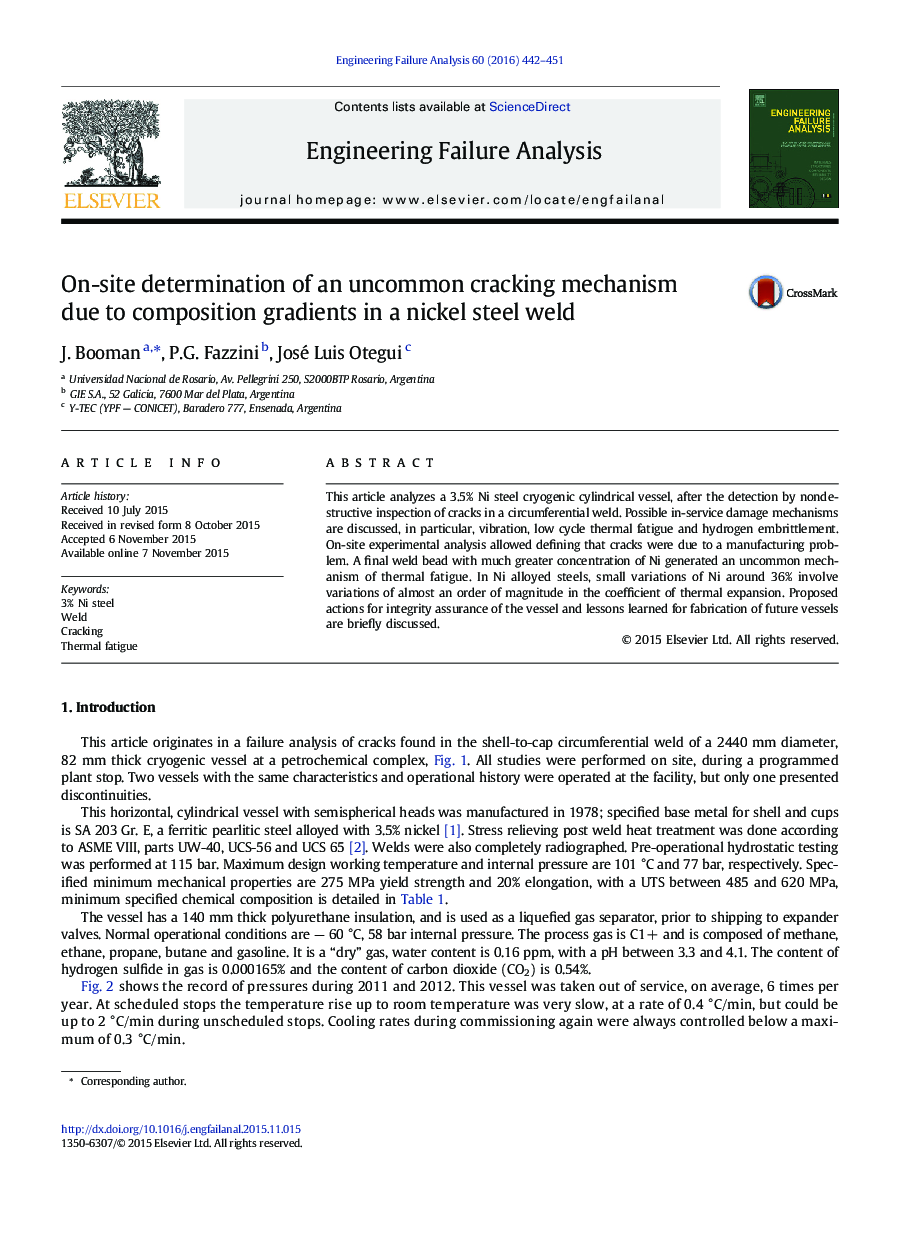| Article ID | Journal | Published Year | Pages | File Type |
|---|---|---|---|---|
| 773672 | Engineering Failure Analysis | 2016 | 10 Pages |
•All possible damage mechanisms according to API RP 571 were evaluated.•Most damage mechanisms were discarded upon the pressure vessel's background.•The failure was due to a repair weld carried out with a high Ni electrode.•High Ni electrode generated an uncommon mechanism of thermal fatigue.•Hydrogen embrittlement could be due to poorly handled electrodes and lack of PWHT.
This article analyzes a 3.5% Ni steel cryogenic cylindrical vessel, after the detection by nondestructive inspection of cracks in a circumferential weld. Possible in-service damage mechanisms are discussed, in particular, vibration, low cycle thermal fatigue and hydrogen embrittlement. On-site experimental analysis allowed defining that cracks were due to a manufacturing problem. A final weld bead with much greater concentration of Ni generated an uncommon mechanism of thermal fatigue. In Ni alloyed steels, small variations of Ni around 36% involve variations of almost an order of magnitude in the coefficient of thermal expansion. Proposed actions for integrity assurance of the vessel and lessons learned for fabrication of future vessels are briefly discussed.
